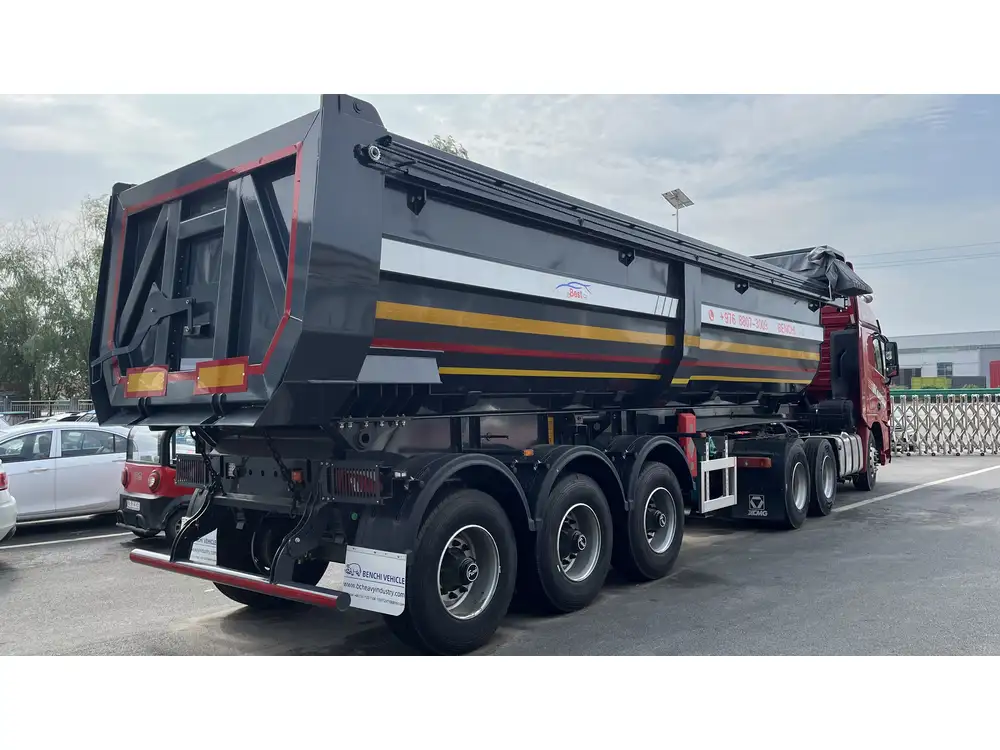When we enter the realm of logistics and transportation, semi-trailers are indispensable assets. Particularly, 53-foot semi-trailers stand as the industry standard for over-the-road freight in the United States. Their dimensions influence various operational, legal, and logistical factors. In this article, we delve deep into understanding how tall a 53-foot semi-trailer is while addressing the intricacies associated with its height, implications for cargo handling, compliance with regulations, and considerations for both transporters and shippers.
What Are the Standard Dimensions of a 53-Foot Semi-Trailer?
A 53-foot semi-trailer typically measures 53 feet in length but its overall height can vary based on several factors, including the type of trailer and any added accessories.
Standard Height Specifications
| Component | Measurement (Feet/Inches) |
|---|---|
| Overall Height | 13 feet 6 inches |
| Width | 8 feet 6 inches |
| Length | 53 feet |
- Overall Height: The maximum legal height for a semi-trailer in the United States is 13 feet 6 inches. This specification allows for standard transport under typical overpasses and structures.
- Width: The 8 feet 6 inches width is standard across most semi-trailers, aiding in stability and road handling.
- Length: While we focus on the 53-foot length, other sizes exist, each optimized for different types of cargo.

Types of 53-Foot Semi-Trailers
Different configurations of 53-foot semi-trailers exist. Here are a few notable examples:
- Dry Van Trailers: Used for general freight, the walls are usually constructed of aluminum or composite materials, facilitating both weight reduction and efficiency.
- Refrigerated Trailers (Reefers): Slightly taller due to additional insulation and the refrigeration unit, commonly reaching heights of 13 feet 8 inches for added air circulation.
- Flatbed Trailers: Generally have a lower height without the walls, which allows for the loading of tall machinery and larger freight.
- Curtain Side Trailers: These combine the benefits of flatbeds and dry vans, featuring side curtains that can be pulled back for loading while maintaining a similar height to dry vans.
Additional Features Impacting Height
- Tires and Suspension Modifications: The trailer’s height can be altered based on tire size and the suspension system employed.
- Load Height: Cargo strapped or stacked on top of the trailer must also be taken into account, though typically loads must stay within the 13 feet 6 inches maximum.
Legal Height Limitations and Regulations
Understanding legal limitations is vital to avoid penalties and ensure safety on public roads. Nearly all U.S. states adhere to a standard maximum height of 13 feet 6 inches for semi-trailers. However, variations can exist based on local regulations:
| State/Region | Maximum Allowed Height |
|---|---|
| Most States | 13 feet 6 inches |
| California | 14 feet |
| Texas | 14 feet |
| Florida | 13 feet 6 inches |

Consequences of Non-Compliance
Failures to comply with height restrictions can lead to significant challenges:
- Fines and Citations: Transporters may incur hefty fines for transporting loads exceeding height limits.
- Increased Liability: In the event of an accident due to height miscalculations, insurance claims may be adversely affected.
- Operational Delays: Having to reroute because of height restrictions can lead to longer delivery times and missed schedules.
Factors Influencing Loads and Height Adjustments
When transporting goods, numerous factors might necessitate adjustments in loading height. Below is a list of considerations affecting the loading process:
- Type of Cargo: Bulky but light items may pack higher, requiring loads to remain under maximum allowance.
- Loading Technique: Strategically distributing weight can help in lowering the overall height of cargo.
- Hazardous Materials: Specific regulations apply to hazardous materials that may add restrictions on loading height.
- Interstate Requirements: Different states impose various limitations on the unloading and loading practices, further complicating height considerations.
Optimal Loading Strategies for 53-Foot Semi-Trailers
Loading a 53-foot semi-trailer requires meticulous planning, especially when correlating height with weight distribution and cargo safety. Consider the following strategies:

Step-by-Step Loading Process
- Assess Cargo Size and Weight: Understand the dimensions and weight of each item being loaded.
- Plan the Layout: Design a loading map to strategically place heavier items at the bottom and close to the front.
- Check Height Regulations: Before loading, confirm that anticipated height meets state and route specifications.
- Secure Loads: Utilize ratchet straps and other securing mechanisms to ensure loads remain stable during transit.
- Conduct Pre-Trip Inspections: Verify that loads comply with height regulations after securing.
Visual Aids for Loading Arrangements
| Loading Arrangement | Benefits |
|---|---|
| Center of Gravity Loading | Maintains balance and stability |
| Weight Distribution | Prevents tipping and wear |
| Strategic Layering | Optimizes space utilization |
Equipment Considerations for Height Management

Adjustable Air Ride Suspensions
These systems allow for raising or lowering the trailer, helping in adapting to varied load heights or overcoming height restrictions.
Specialized Loading Equipment
Tools like tilt trailers and hydraulic lifts can further aid in managing the height of loads, particularly in challenging loading environments.
The Importance of Regular Maintenance
Maintaining a semi-trailer is paramount for safety and efficiency. Key maintenance tasks include:
- Inspection of Suspension Systems: Ensure that all height modification systems function correctly.
- Tire Pressure Monitoring: Correct tire inflation can influence the height of the entire trailer setup.
- Routine Brake Checks: Safety cannot be compromised, especially when altering height for specific loads.

Conclusion: Navigating Height for Optimal Logistics Efficiency
Understanding the height of a 53-foot semi-trailer is fundamental for ensuring effective logistics operations. From negotiating legal requirements to employing optimal loading techniques, every detail plays a role in maintaining safety and efficiency. As logistics demands evolve, staying informed on height regulations, equipment innovations, and maintenance practices ensures that transporters remain adept at navigating the complexities of the trucking industry. Enjoyable transport is achievable when one efficiently manages every aspect of the journey, starting from understanding how tall a 53-foot semi-trailer stands.



